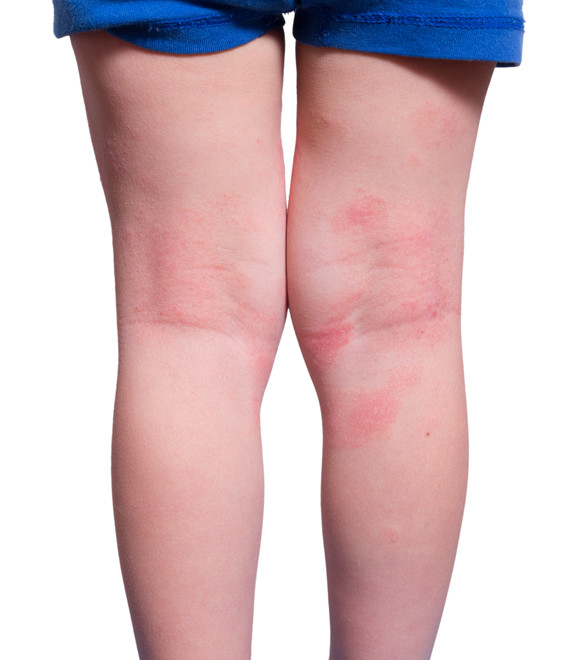

Why should you receive treatment
for atopic dermatitis in AMC?
Atopic dermatitis (AD) is an inflammatory, chronically relapsing and pruritic skin disease. Many people including 10~20% of children suffer from atopic dermatitis. The symptoms start during infancy at 2~6 months of age and mostly develop in newborns less than one-year-old. It occurs in 85% of children before they reach the age of five. Because atopic dermatitis is regarded as the first sign of 'the allergic march,' careful attention and treatment are necessary during the early stages of development for it can progress to become asthma or allergic rhinitis in the future.
AMC’s Childhood Asthma Atopic Center established in 2008 has strived to develop evidence-based treatment plans for each patient. AMC works to improve the quality of life for atopic dermatitis patients, especially in the long run.
Although the declining birth rate has led to a decrease in the number of children, the demand for treatment of severe chronic respiratory diseases in children remains steady, while the availability of medical institutions capable of meeting this demand is insufficient. Additionally, allergic conditions such as asthma, atopic dermatitis, and food allergies continue to show high prevalence, with a growing demand for personalized treatment tailored to each individual rather than standardized approaches. In response, we have renamed the Childhood Asthma·Atopy Center to the more comprehensive ‘Childhood Respiratory and Allergy Center,’ with the goal of serving as a central institution for the diagnosis and treatment of pediatric respiratory and allergic diseases in Korea.
Professionals including pharmacists, nurse specialist, and nutritionists educate the patient on the disease, medication, diet, etc. for effective management of the disease. Also, the pediatric allergy screening room provides various allergy screenings, allowing for accurate diagnosis and patient accommodated consultations.
Treatment options

Skin care
Education on the correct use of moisturizers and soap
Moisturizers not only protect the skin weakened by atopic dermatitis but also help keep the skin hydrated, preventing the aggravation of atopic dermatitis in the future. Moisturizers also help the skin in becoming soft and supple and reduce the use of topical steroid. It is desirable for the patients to apply a generous amount – around 500 g for two weeks - of moisturizers to damp skin within three minutes after bathing. Most people think to apply moisturizers only after bathing, however if possible, it is better to apply moisturizers frequently or at least two times a day. A pH level of 4.5 to 5.6 is recommended for it offers the best protection. Optimal skin pH prevents moisture loss and bacterial and fungal infiltrations. Therefore, it is recommended to use a weakly acidic detergent that does not contain perfume or pigment.
Drug therapy
Education on appropriate medication according to severity, age, and location
Steroidal and non-steroidal immunomodulatory to prevent recurrence, antihistaminic agents to alleviate itching, and antibiotics to block secondary bacterial infections are all considered as treatment for atopic dermatitis. Because atopic dermatitis is a chronic dermatologic disease, treating it with topical steroid at the proper time is essential. However, as the negative aspects of steroid agents were emphasized on the Internet and social media, patients have started to avoid the use of steroid agents. Furthermore, it has resulted in the exacerbation of their skin condition and failure to treat atopic dermatitis. There are always pros and cons to every medicine. Therefore it is imperative to understand the correct usage and the effects of the medicine. Using medicine wisely help to achieve maximum effect.

Nutrition control
Accurate diagnosis and treatment plan for food allergy, Education on nutrition for growth and development
If a food allergy is suspected in patients with atopic dermatitis, it is important to find out the particular allergen that has caused it. Highly allergenic foods include eggs, milk, peanuts, soybeans, flour, and seafood. Only validated allergenic foods based on the patients’ symptoms and test results will be restricted to their diet. Patients will be asked to write a food diary to review their nutritive condition. Many patients are rarely allergic to more than one or two foods. Therefore, patients will not be restricted to foods other than those identified as allergens because avoiding too many kinds of foods may cause malnutrition. Therefore it is necessary to consult with a doctor.
Environment control
Education on proper environment and the management of aggravating factors
Patients with atopic dermatitis should wear soft clothing that allows the skin to breathe and should avoid clothing with wool, acrylic, nylon or other rough textures. If sweating causes itching, other methods for ventilation are considered. For instance, avoiding excessive physical activities, putting on thin layers of clothing, adapting to temperature changes, and keeping room temperatures cool. If itching is caused by sweat, dust, pollen, or exposure to other elements, applying moisturizer within three minutes after taking a cool shower or bathing may help. Children with atopic dermatitis are likely to be allergic to animals. If there is a family pet, keep them away from the child’s bed, rug, and furniture. House dust mites are mostly present in bedroom carpets and bedspreads so it is helpful to get rid of the carpets and to wash bed linen frequently in warm water. Consult with a doctor on what causes stress and include those issues as part of the treatment process to effectively treat atopic dermatitis. If the patient is a child, teach the child how to deal with the disease on his or her own.
Prognosis and prevention
Active treatment of atopic dermatitis and monitoring of allergic diseases
The prognosis of atopic dermatitis varies depending on the patient’s skin condition, allergy stimulants, accompanying allergic diseases, and bacterial infection. It is a chronic condition that repeats the stages of improvement and aggravation and often relapses years after complete recovery. Atopic dermatitis needs care especially during infancy because 60-80% of infants develop asthma, allergic rhinitis, or other allergic diseases in the future. This progression is also known as the 'the allergic march.' Therefore AMC offers early treatment, education on continuous symptom management, and monitoring of the disease.
